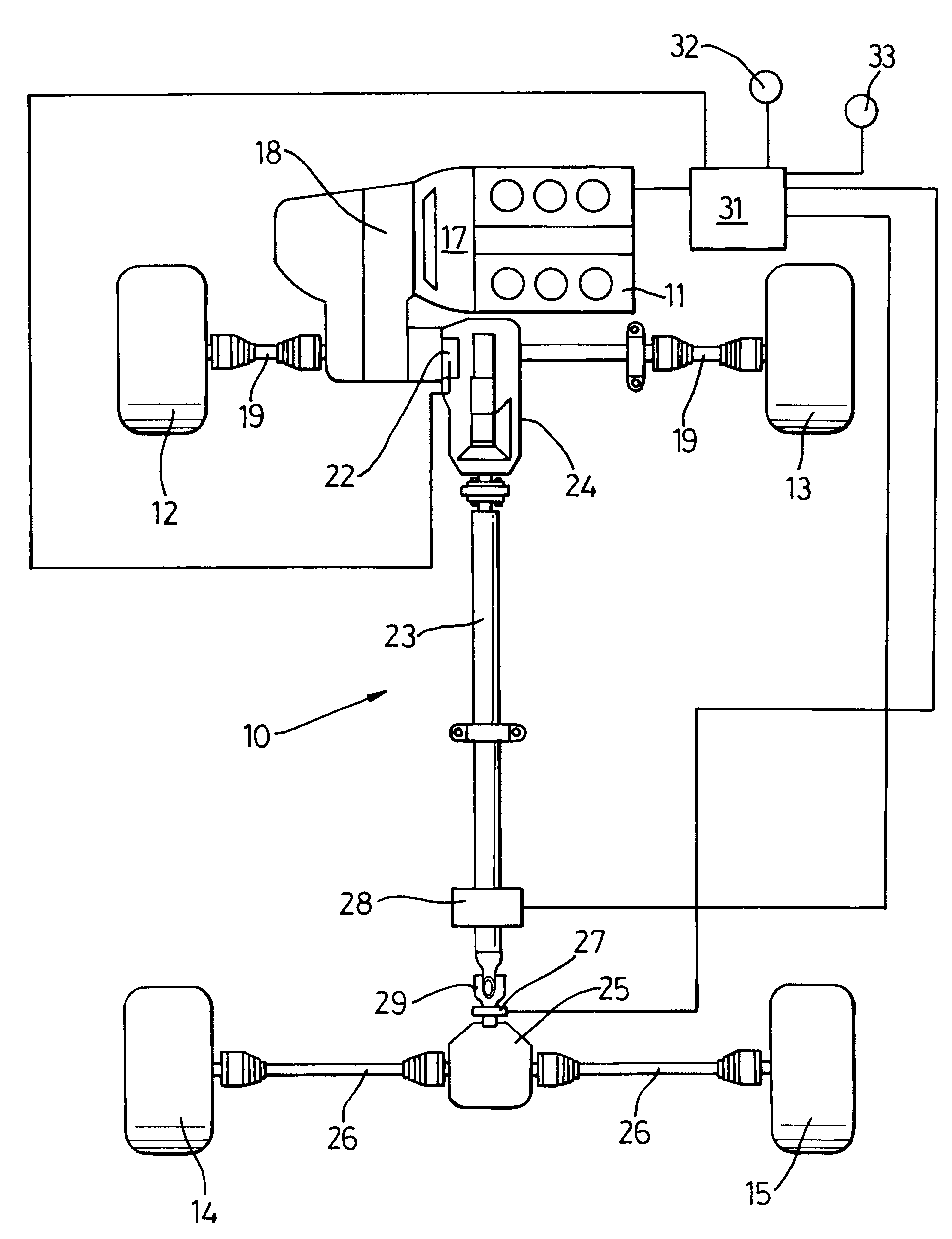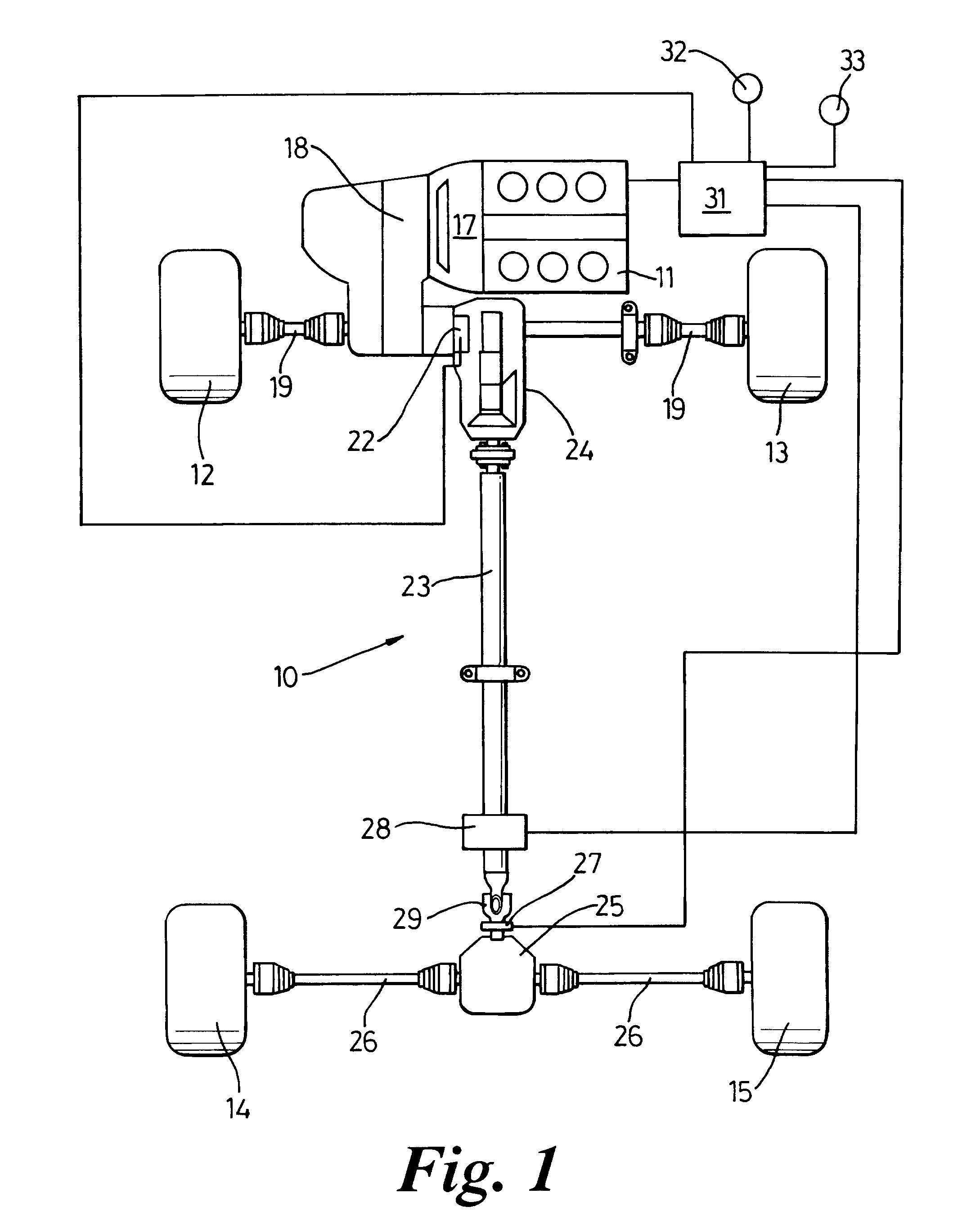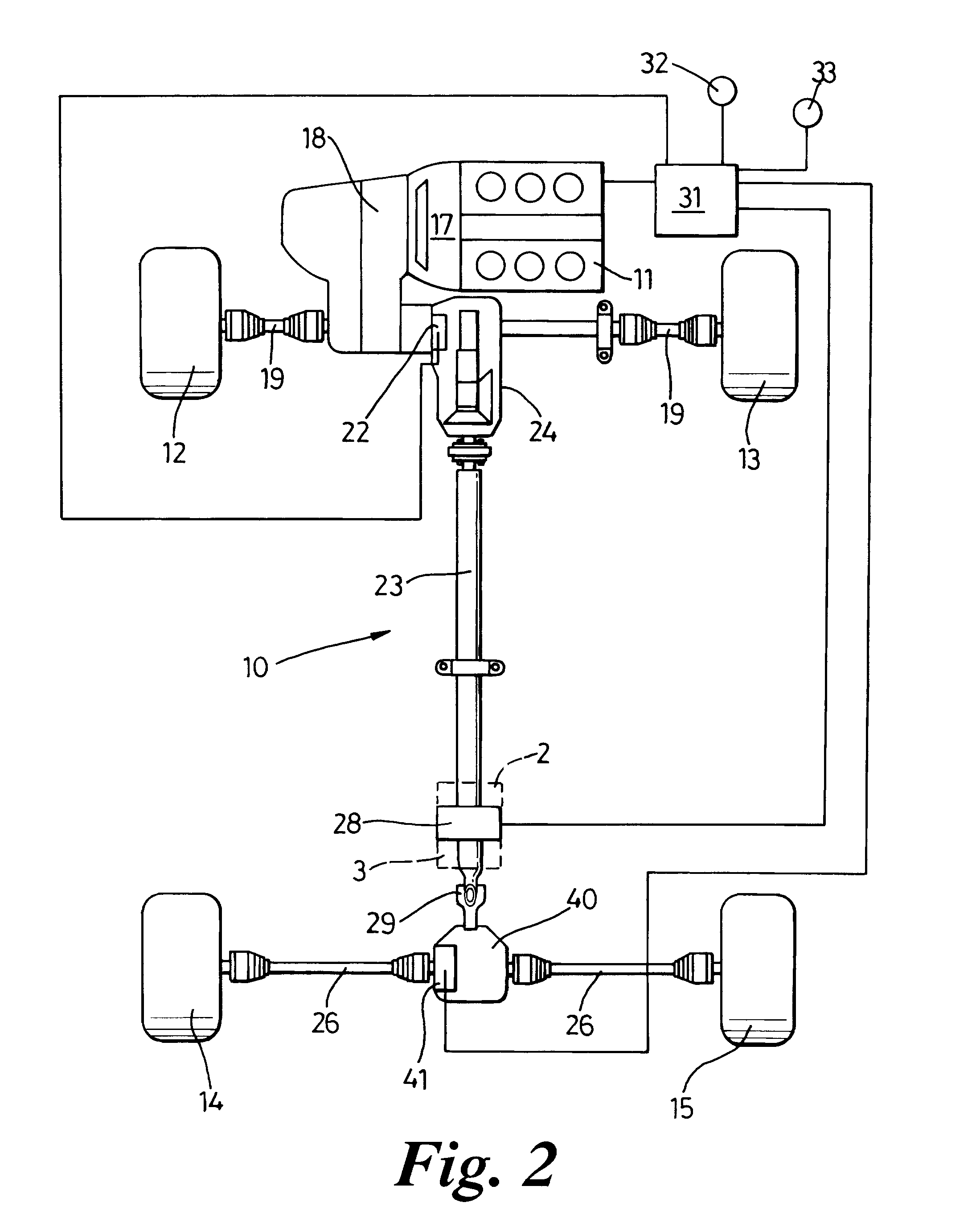Hybrid Motor Vehicle Driveline
a hybrid motor vehicle and driveline technology, applied in mechanical devices, transportation and packaging, gearing, etc., can solve the problems of jerking, reconnection may be felt by the driver as an unacceptable jerk, and the driver may still feel the jerk when the first clutch is applied, so as to increase the inertia and frictional drag
- Summary
- Abstract
- Description
- Claims
- Application Information
AI Technical Summary
Benefits of technology
Problems solved by technology
Method used
Image
Examples
second embodiment
[0042]In the alternative arrangement of FIG. 2 those components common to the components of FIG. 1 bear the same reference numerals. In this second embodiment there is no clutch provided between the propshaft and the differential. Instead the propshaft 23 is directly connected via the universal joint 29 to a free-running differential 40. The propshaft 23 is decoupled from (and reconnected to) the rear wheels 14, 15 by the action of a clutch mechanism 41 incorporated within the differential 40. This clutch mechanism 41 is under the control of the controller 31.
[0043]This second embodiment operates in a similar fashion to that of the first with the electric motor 28 spinning up the propshaft 23, transmission 24 and those components of the differential 40 which are not isolated by the action of the clutch 41 to the appropriate rotational speed prior to the change to four wheel drive capability through the engagement of the PTO clutch 22 and differential clutch 41.
[0044]The embodiment o...
third embodiment
[0046]This third embodiment provides the maximum fuel economy benefit while the vehicle is in two wheel drive mode because the transmission 24, the propshaft 23, the differential 25 and the rear drive shafts 26 are all stationary.
[0047]On changing over to four wheel drive mode, the electric motor 28 spins up the propshaft 23 (and the connected driveline components) to the appropriate speed and subsequently, the controller 31 initiates re-engagement of the PTO clutch 22 and hub clutches 50.
[0048]This embodiment is capable of operating as a hybrid vehicle in four wheel drive mode.
fourth embodiment
[0049]In FIG. 4, those components common to the components of FIG. 1 bear the same reference numerals. In this alternative embodiment, the electric motor 28 is housed within the differential 42 and connected to a crown wheel 43. A clutch 44 incorporated in the differential 42 serves to isolate the crown wheel 43, and propshaft 23 from the drive shafts 26 when the vehicle is in two wheel drive mode.
[0050]On changing over to four wheel drive, the electric motor 28 spins up the crown wheel 43 and the propshaft 23 to the appropriate speed. Then the controller 31 initiates re-engagement of the PTO clutch 22 and the differential clutch 44.
[0051]This configuration shown in FIG. 4 allows a hybrid drive capability in two wheel drive or four wheel drive mode.
[0052]In the further alternative arrangement of FIG. 5, those components common to the components of FIG. 4 bear the same reference numerals. Two further clutches are incorporated in the differential to enhance the hybrid drive capability...
PUM
 Login to View More
Login to View More Abstract
Description
Claims
Application Information
 Login to View More
Login to View More - R&D
- Intellectual Property
- Life Sciences
- Materials
- Tech Scout
- Unparalleled Data Quality
- Higher Quality Content
- 60% Fewer Hallucinations
Browse by: Latest US Patents, China's latest patents, Technical Efficacy Thesaurus, Application Domain, Technology Topic, Popular Technical Reports.
© 2025 PatSnap. All rights reserved.Legal|Privacy policy|Modern Slavery Act Transparency Statement|Sitemap|About US| Contact US: help@patsnap.com



